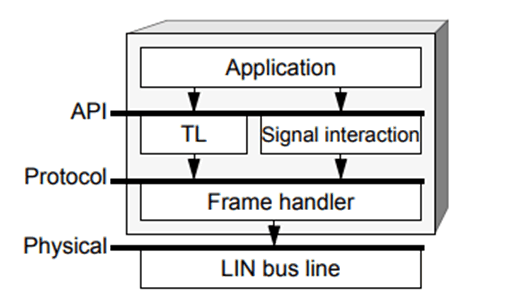SLLA383A February 2018 – August 2022 SN65HVDA100-Q1 , SN65HVDA195-Q1 , TLIN1022-Q1 , TLIN1029-Q1 , TLIN2022-Q1 , TLIN2029-Q1 , TMS320F28P550SG , TMS320F28P550SJ , TMS320F28P559SG-Q1 , TMS320F28P559SJ-Q1
1 Abstract
The Local Interconnect Network (LIN), ISO17897, is a multipoint, low-cost and easily-implemented communication bus in automobiles. It works as a sub-bus for the Controller Area Network in most applications. This application note presents the integral parts of LIN technology, focusing on the LIN transceiver itself, information on the protocol, and the physical layer requirements for real applications.
 Figure 1-1 LIN Hierarchy
Chart
Figure 1-1 LIN Hierarchy
Chart